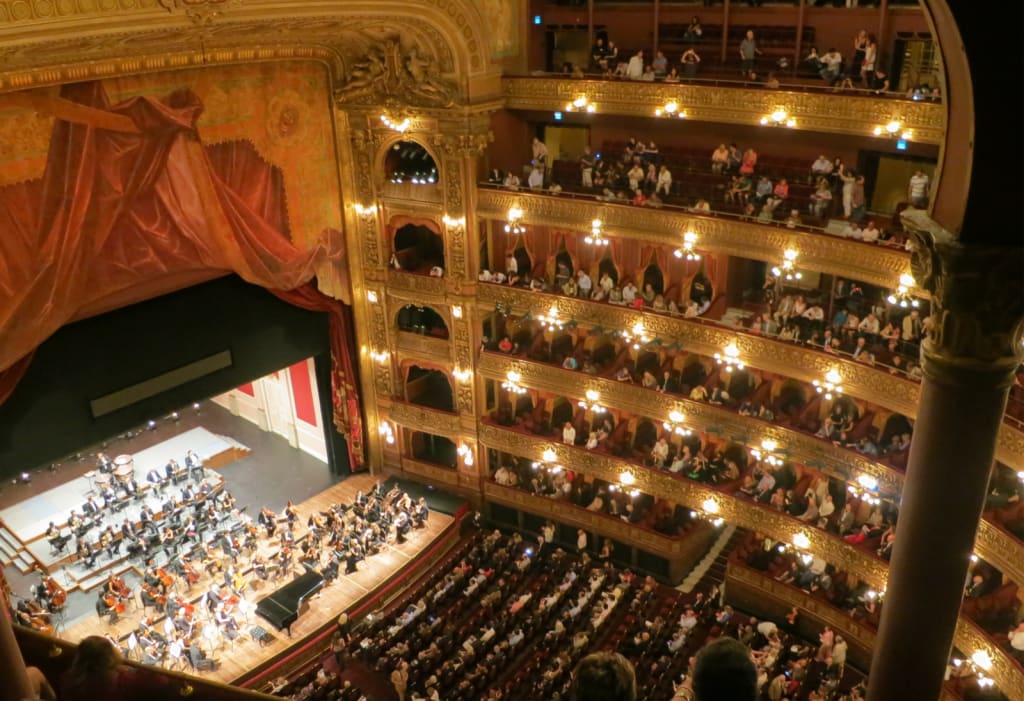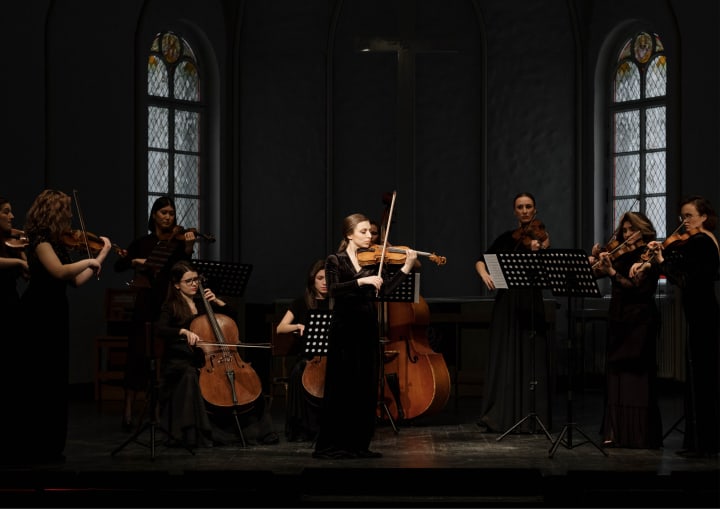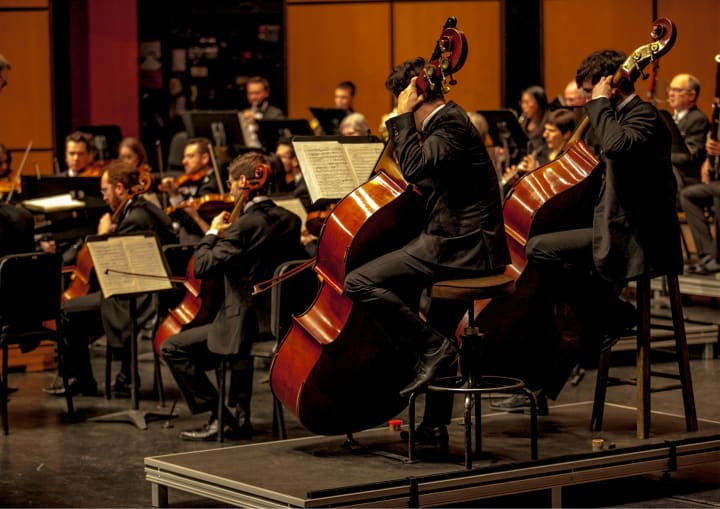
Orchestras are some of the most powerful and influential ensembles in the world of music. With a rich history dating back several centuries, they continue to inspire and move audiences today. An orchestra is a large ensemble of musicians playing a variety of instruments, typically including strings, woodwinds, brass, and percussion.
An orchestra is a large musical ensemble that typically consists of four major instrument families: strings, woodwinds, brass, and percussion. Each family includes several instruments that create a distinct sound, and together they produce a rich and harmonious blend of music.
Orchestras have a long and fascinating history, dating back to the 16th century. They were originally created as a means of providing entertainment for the aristocracy and were primarily composed of string instruments such as violins, cellos, and basses.
The conductor leads the orchestra, directing the musicians to play together in harmony and create a cohesive, unified sound. In this article, we'll explore the history of orchestras, their role in music today, and what makes them so powerful. In this article, we'll explore the world of orchestras, from their history and composition to their importance in modern music.
History of Orchestras
Orchestras have their roots in the courtly music of the Baroque period, where they were used to provide entertainment for the aristocracy. In the 17th and 18th centuries, composers such as Johann Sebastian Bach and George Frideric Handel wrote music for small orchestras consisting of strings, woodwinds, and sometimes a few brass instruments.
As orchestras grew in size and complexity, composers began to write music that took advantage of the full range of instruments available. The Classical period saw the rise of the symphony, a multi-movement work for orchestra that typically included four movements. Composers such as Wolfgang Amadeus Mozart, Ludwig van Beethoven, and Franz Joseph Haydn wrote some of the most famous and beloved symphonies in history during this period.

The Romantic period saw an explosion in the size and complexity of orchestras, with composers like Hector Berlioz and Richard Wagner writing massive works that required hundreds of musicians. This era also saw the rise of the conductor as a prominent figure, with great conductors like Arturo Toscanini and Gustav Mahler leading orchestras to new heights of excellence.
In the 20th century, orchestras continued to evolve and adapt to the changing musical landscape. Many composers, such as Igor Stravinsky and Arnold Schoenberg, experimented with new forms and techniques that challenged the traditional notion of what orchestral music could be. Orchestras also began to incorporate electronic instruments and other non-traditional sounds into their repertoire.
Today, orchestras continue to play an important role in the world of music. They perform a wide range of repertoire, from classical and Romantic works to contemporary pieces and film scores. They also serve as ambassadors of their respective cultures, promoting the music of their country and region to audiences around the world.
The Role of Orchestras Today
Orchestras today play an important role in music education and community outreach. Many orchestras offer educational programs for children, introducing them to the world of classical music and providing them with opportunities to learn about instruments, composers, and music theory. These programs often include performances specifically designed for young audiences, as well as hands-on workshops and classes.

Orchestras also serve as cultural ambassadors, showcasing the music of their country or region to audiences around the world. They frequently tour internationally, performing in prestigious concert halls and festivals and collaborating with local musicians and ensembles. These tours not only promote the music of the orchestra but also provide opportunities for cultural exchange and dialogue.
In addition to their educational and cultural roles, orchestras also play an important role in the broader music industry. Many orchestras collaborate with contemporary artists, performing on their albums or in their concerts. They also perform the scores for films, television shows, and video games, bringing their unique sound and sensibility to a wider audience.
A layout of the instruments of the modern (Symphony) Orchestra
A modern symphony orchestra typically consists of four main sections: strings, woodwinds, brass, and percussion. Within each section, there are several different instruments that contribute to the overall sound of the orchestra.
The string section is usually the largest section in the orchestra and consists of violins, violas, cellos, and double basses. The violins are divided into two groups: the first violins and the second violins. The first violins usually play the melody and the second violin provides harmony and support. The violas and cellos provide a rich, warm sound in the middle range, while the double basses provide the foundation with their low notes.

The woodwind section typically includes flutes, oboes, clarinets, and bassoons. The flutes and clarinets provide a bright, clear sound, while the oboes and bassoons have a deeper, more reedy sound. In some cases, the orchestra may also include additional woodwind instruments such as piccolos, English horns, and contrabassoons.

The brass section includes trumpets, French horns, trombones, and tubas. The trumpets provide a bright, powerful sound, while the French horns have a warm, rich tone. The trombones provide a deep, powerful sound, while the tuba provides the foundation with its low notes.
Finally, the percussion section includes a variety of instruments such as timpani, snare drum, bass drum, cymbals, and other auxiliary instruments. The percussion instruments add rhythm and texture to the overall sound of the orchestra.
The layout of the instruments in a modern symphony orchestra is usually organized by section, with each section sitting together on the stage. The string section is typically positioned in the center of the stage, with the woodwinds to the left, brass to the right, and percussion at the back. This arrangement allows for the sound to be balanced and well-coordinated, with each section contributing to the overall sound of the orchestra. The conductor typically stands at the front of the stage, facing the orchestra, and directs the musicians with a baton or his/her hands.
Conclusion
In conclusion, orchestras are a vital part of the musical world, providing us with an endless array of beautiful music. From classical to contemporary, orchestral music has the power to move us emotionally and transport us to another world.
The rich sound of a modern symphony orchestra is created by the careful arrangement and interplay of various instruments, each playing their unique role in the overall sound. From the soaring melodies of the violins to the thundering percussion, each section of the orchestra contributes to the overall sound and character of the music.
Despite the challenges that orchestras face in the modern world, they continue to thrive and inspire audiences around the world. From the traditional orchestras of Europe to the contemporary orchestras of Asia and the Americas, the universal language of music continues to unite us all.
In a world where technology and digital media dominate, orchestras remind us of the beauty and power of live music. The magic of seeing a group of musicians come together to create a beautiful symphony is truly something special and should be cherished and celebrated.
In short, orchestras are a timeless and invaluable part of our cultural heritage, and we should continue to support and appreciate them for generations to come.
About the Creator
Gokila
She is an astrophile, introvert,
loves to read books all day long,
addicts in healthy lifestyle
and having curiosity to know about new things.
Life Is As Beautiful As You Make It. Contentment Is The Key To Happiness. Peace Be Upon The Saviour.






Comments
There are no comments for this story
Be the first to respond and start the conversation.